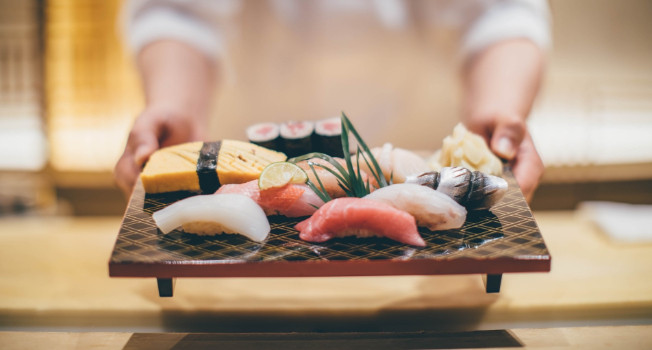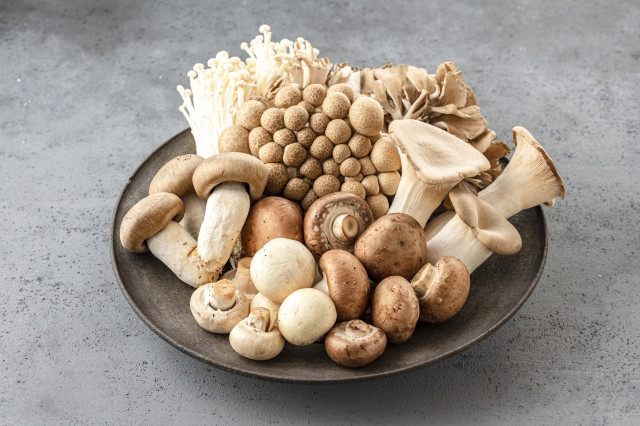Ramen by itself can be a large part of any traveler’s food experience in Japan. The food is famous both in the country and worldwide, and through time and different local cultures and ingredients, there are variants of ramen throughout the country. Without a doubt, eating ramen is something that you cannot not-do when visiting Japan.
Table of Contents
A Bowl of Ramen
You should never conclude your Japan visit without trying a bowl or two of ramen. Ramen is a noodle soup dish that has gained extreme popularity in the country, and even in the world. A bowl of ramen is one of the staple dishes in Japan, and both locals and tourists are obsessed with this satisfying dish.
Ramen can be eaten at any time of the day; however, it is most popular at night, especially during winter or cold seasons. Many Japanese locals enjoy ramen after a tiring day. It’s a perfect fix for people who are too busy and have no time to cook for themselves. Ramen has also been a favorite shime, or last meal of a night out, as well as a go-to hangover cure for many, and many tourists will agree that it is one of the must-try foods in Japan.
Writer's Pick
Varieties of Ramen
If you think that all ramen is just the same, well, you are clearly mistaken. In Japan, there are so many varieties of ramen from different regions of the country. However, ramen can be primarily categorized according to the soup flavor that gives the dish its overall taste. The four basic types of soups are the following:

Shio Ramen
It is the most traditional type of ramen soup which is flavored with salt and is usually made of chicken broth. Thus, Shio ramen has a light and clear soup and tends to be the most simple in terms of ingredients including toppings..
Tonkotsu Ramen
Tonkotsu ramen can either be combined with salt or soy sauce flavoring. But what sets it apart from the other types of ramen is its thick and creamy soup. The secret behind this mouth-watering texture is the process of boiling pork bones for a long period of time (around 11-12 hours) until it dissolves into a white gelatin-like texture and stock. Thus tonkotsu ramen has the image of being the richest and fattiest of the ramen soups.
Miso Ramen
This type of ramen also has a thick consistency, a brownish color, and a distinct flavor of soup because of the miso (soybean paste) that is used to season it. It has been a favorite variant of ramen in colder areas of Japan especially during winter because of its heartier taste.
Shoyu Ramen
Shoyu ramen is the most common variant of ramen in Japan. It is flavored with a special soy sauce which gives it a flavorful but light brown soup that is usually made of chicken broth. It tends to be the sweetest soup out of the four.
And if you’ve tried all 4 of these and are in the mood for something new, more recent popular soups include niboshi (dried sardines) and curry, or different styles of ramen, such as tsukemen where you would dip the noodles into the soup.
Add-ons
In order to spice up your bowl ramen, you can also choose what meat, condiments, and toppings you are going to mix with your ramen. Here are some of the common examples of add-ons you can choose from:
-
Chashu or braised pork (circular cut)
-
Kakuni or braised pork belly (squarical or cube cut)
-
Ajitama or seasoned slightly runny boiled egg
-
Kamaboko or steamed fish cake
-
Menma or preserved bamboo shoots
-
Kikurage or black mushrooms
-
Negi or chopped scallion
-
Nori or dried seaweed
-
Moyashi or bean sprouts
-
And many more like sesame, pickled ginger, butter, and corn
And of course the noodles are a key part of the experience. However, most people trust the shop to have found the best type of noodles to combine with their soup. Once you become more familiar with ramen, you can begin experimenting with different types of noodles, the hardness of the noodle, the amount of oil in the soup, and so on to find the best combination for you!
Regional Ramen

Ramen in Japan can also be classified into regional variants because most of the time, each region puts its own twist on the traditional ramen dish to create a distinct and original taste that will set it apart from the others. Some of the popular regional variants of ramen are as follows:
-
Tokyo Ramen. It is known for its unique soup, a combination of chicken stock, shoyu, and dashi (Japanese soup stock) . It has also become the stereotype of shoyu ramen - thus what better place to try shoyu ramen than in Tokyo!
-
Sapporo Ramen. The thick and rich soup of Sapporo Ramen is a result of the combination of chicken and pork broth plus a red miso paste. This ramen in Hokkaido is an absolute favorite during winter. The typical image of Sapporo ramen is topped with butter and corn. Other popular Hokkaido ramen include Hakodate and Asahikawa ramen but Sapporo’s is arguably the most famous.
-
Tokushima Ramen. Originating in Shikoku island, Tokushima Ramen is famous for its combination of tonkotsu and shoyu soup. It is also topped with a raw egg, making it different from most other ramen that use cooked eggs. This one might be little known overseas, but it’s popular enough that there are shops in Tokyo specializing in it.
Cost and Average Price of Ramen in Tokyo

Ramen is basically inexpensive, one of its charms, and you can find it anywhere. Cost and prices also vary on the type of ramen and the restaurant you are dining in but it usually ranges from as low as 300 yen to 1500, even more depending on the toppings. There are famous chain shops popular with tourists, like Ichiran and Ippudo. And each person has their own favorite ramen, so it would be hard to cover absolutely all of them.
Here are just some of the top recommended ramen shops at all ranges of prices in Tokyo:
Recommended Ramen Shops in Tokyo (Highest to lowest price)
Sosakumenkobo Nakiryu (Toshima)
The 2017 Michelin star ramen restaurant! The highly recommended ramen include a soy sauce-based ramen as well as tantanmen where the spicy noodles, sesame paste, and flavored rich blend of base soup are all homemade. The special soy sauce-based ramen costs 1100 yen but the tantanmen only costs 850 yen.
Japanese Soba Noodles Tsuta (Yoyogi)
The first Michelin star ramen restaurant in the world that only serves selected fine ingredients, like truffle powder and oil, appealing a sophisticated perfection for ramen lovers. A basic bowl of ramen costs 1050, but with special toppings like seasoned eggs, or if you order a special bowl, such as the wagyu ramen, it can cost 1500 yen or more.
Konjiki Hototogisu (Shinjuku)
Tokyo's third Michelin-quality ramen not to be missed! A worth it bowl ranges from 950 to 1250 yen.
Menya Fujishiro (Meguro and Sangenjaya)
A cozy, healthy, organic and additive-free ramen restaurant recommended by the locals! The highly recommended Hojun Tori Paitan Ajitama tsukemen (dipping ramen) has a deep rich umami flavor without artificial seasoning. The tsukemen is 870 yen, but the ramen ranges from 750 to 1000 yen.
Jinweide (Roppongi Branch)
And if you’re looking for something different than the above, enjoy hand-pulled noodles with a delicious soup made up of beef bone broth and beef slices seasoned with more than 20 spices in Roppongi for only 880 yen.
Hakata Tenjin (Shinjuku)
Grab a bowl of Hakata style ramen with a rich and creamy soup for only 500 yen.
Korai (Shinjuku)
If you are on a budget, taste this affordable and simple but delicious chicken stock soup for only 400 yen.
Kiwami (Ginza)
Slurp down your 320 yen ramen noodle soup, a total steal in Ginza, made up of chicken bone stock and soy sauce while standing and watching the chef at the counter.
Shinkyo (Nerima)
Saving your extra yen but craving for authentic Japanese ramen? Try the most basic bowl of ramen for only 300 yen at Shinkyo! And if you want an upgrade, the wonton ramen or miso ramen is also available for 400 yen. A go-to place by locals, especially students, for an affordable yet delicious bowl of soup.
Please take note that these ramen shops are only a few of the countless shops scattered across Tokyo that will surely provide a refreshing and satisfying bowl of ramen noodles for an inexpensive price.
Takeaway

Ramen is one of the famous and must-try foods in Japan, to which any trip will never complete without having a bowl for yourself. Japanese Ramen also has also gained popularity in other parts of the world, and you can actually see Japanese ramen shops in other countries as well. However, there is no better place to try a bowl of Ramen than in Japan itself.



































